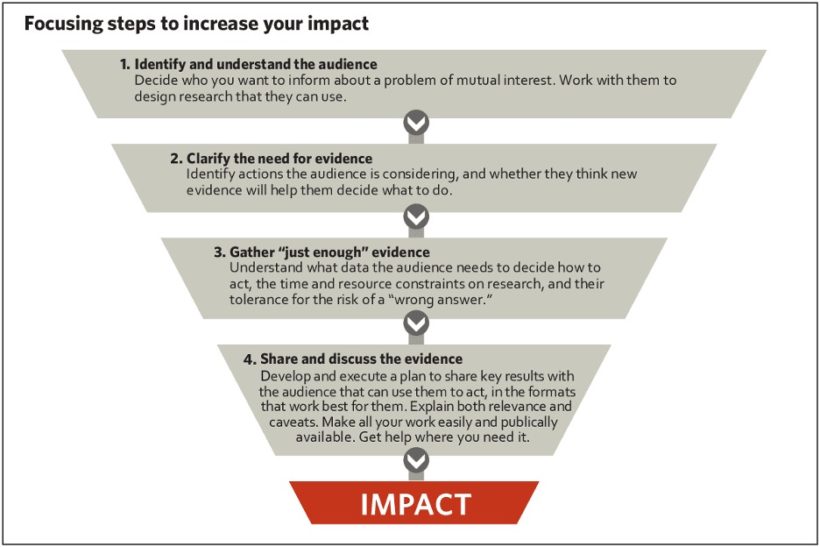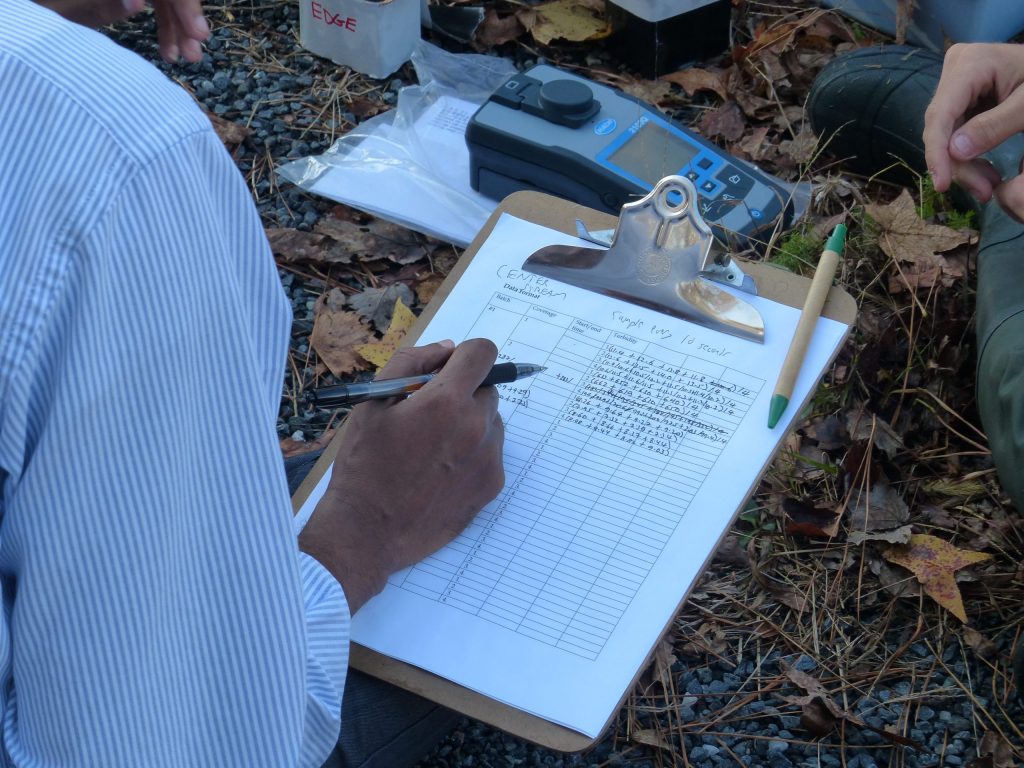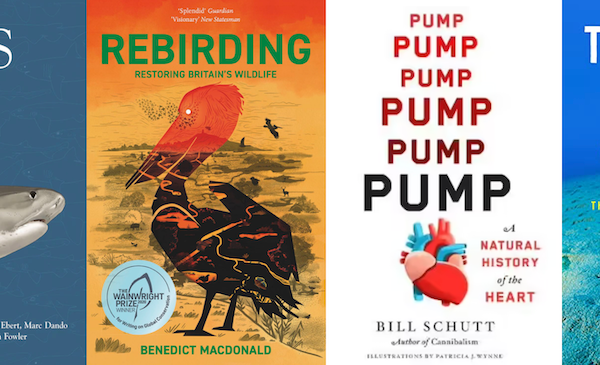A paper in Conservation Science and Practice synthesizes and outlines a set of guidelines and principles scientists can use to help increase the odds that their research will be used to identify, define and solve real-world problems.
The Gist
Written by scientists for scientists, the open-access publication, “Improving scientific impact: How to practice science that influences environmental policy and management,” notes that lots of conservation research fails to reach the decision makers who could use it.
The authors outline a set of practical steps scientists can take to increase the odds their work will get used to solve problems: (a) identify and understand the audience; (b) clarify the need for evidence; (c) gather “just enough” evidence; and (d) share and discuss the evidence.

The Big Picture
As noted in the paper, “scientists devote substantial time and resources to research intended to help solve environmental problems. Environmental managers and policymakers must decide how to use the best available research evidence to prioritize actions leading to desired environmental outcomes. Yet decision-makers can face barriers to using scientific evidence to inform action. They may be unaware of the evidence, lack access to it, not understand it, or view it as irrelevant. These barriers mean a valuable resource (evidence) is underused.”
To overcome those barriers, the authors argue, scientists who want to practice science for impact need to pay “greater attention to what comes before and after the collection and analysis of data.” They need to keep the ultimate goal of their work – the problem they’re trying to solve — in mind from the very beginning of project or research development plans.
“Our hope,” says co-author Jon Fisher, “is that better awareness and use of our recommendations will translate to the more effective use of evidence to inform environmental decisions.”
And while the co-authors come from the environmental science field, their recommendations are applicable to many different scientific disciplines.
The Takeaway
There is a large body of published work on science impact, but this paper is offered as “an easy-to-read stand-alone document that can be used by scientists without knowledge of the broader literature.”
While the success of impactful research is often partly due to luck and persistence, there are many reasons that research fails to influence decision making. And even following these guidelines, the researchers note, does not guarantee that evidence will reach decision makers or that they will use it.
Instead, this paper, says co-author Steve Wood, “is about looking at what scientists can control – what they can do – to improve the odds that their work will get used by people making decisions. There are never any guarantees when it comes to applying science to problem solving, but what we can say is that, following these guidelines – thinking through the context of your work as a whole — can make it much more likely that your work will have impact.”
For a more in-depth discussion of practicing science for impact, check out the Q&A with paper co-authors, Jon Fisher and Steve Wood, “Finding the Other Hand: How to Practice Science for Impact.”




Join the Discussion